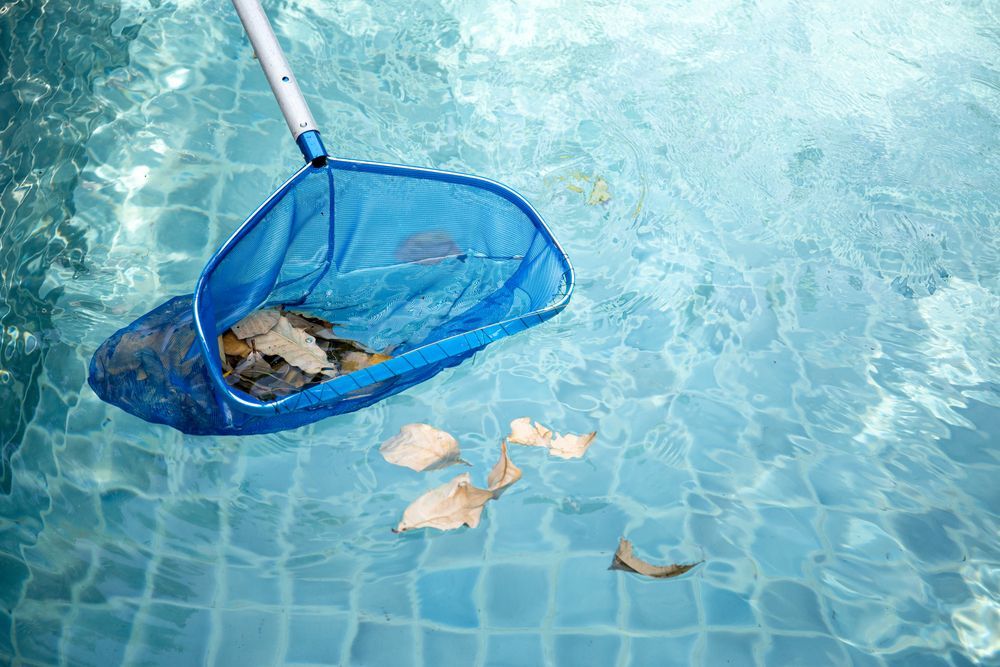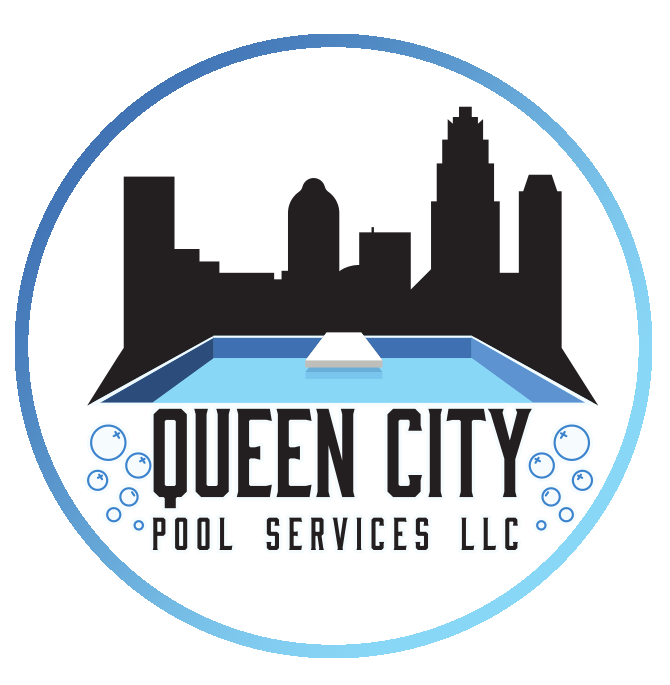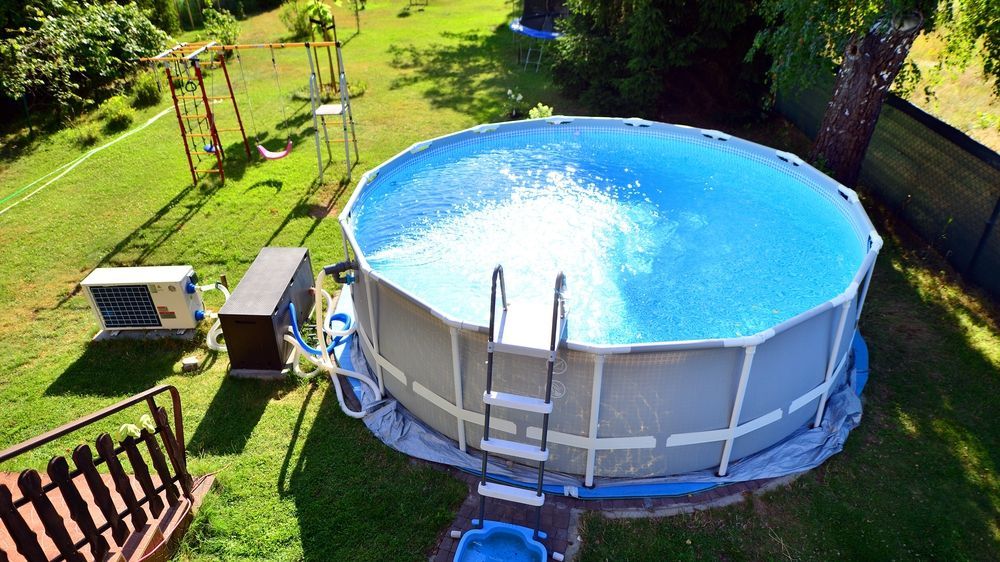How To Clean Your Swimming Pool: A Step-By-Step Guide

Keeping a swimming pool clean is essential not only for the aesthetic appeal but also for maintaining a healthy swimming environment. Understanding how to clean a pool effectively can seem daunting, but with the right knowledge and tools, it becomes a manageable and even rewarding task. This guide will walk you through the steps needed to ensure your pool remains in pristine condition.
Understanding Your Pool's Needs
Before diving into the cleaning process, it's important to understand the specific needs of your pool. Factors such as size, type (in-ground or above-ground), and the materials used in its construction (concrete, fiberglass, vinyl) will influence the cleaning techniques and products you should use. Additionally, the surrounding environment, like trees and landscape features, can impact the amount of debris your pool collects and its chemical balance.
How To Clean A Pool
Regular Maintenance Schedule
Establishing a regular maintenance schedule is crucial for keeping your pool clean and ready for use. This includes daily, weekly, and monthly tasks that help prevent algae growth, maintain water chemistry, and ensure the pool's systems are functioning properly. Consistency in pool maintenance not only extends the life of your pool but also makes the cleaning process more efficient and less time-consuming.
Daily Tasks: Skimming and Filtering
- Skimming the Surface: Begin your pool cleaning routine by skimming the water's surface every day. This removes leaves, insects, and other debris before they sink to the bottom and decompose. A long-handled leaf skimmer or net can make this task easier, allowing you to reach the entire surface area of the pool.
- Checking the Filter System: Your pool’s filter system plays a crucial role in keeping the water clean by removing dirt, leaves, and smaller debris. Check the filter daily to ensure it's running correctly and clean or replace the filter media as recommended by the manufacturer. A clean filter system is more effective and efficient, reducing the need for chemical treatments.
Weekly Tasks: Vacuuming and Brushing
- Vacuuming the Pool: Vacuuming your pool every week is essential for removing debris from the bottom and sides of the pool that the skimmer and filter may miss. Whether you use a manual vacuum or an automatic pool cleaner, make sure to cover the entire pool, paying close attention to corners and steps where algae and debris tend to accumulate.
- Brushing Walls and Tiles: After vacuuming, brush the pool walls, floor, and steps to dislodge algae and prevent buildup. Use a pool brush attached to a telescopic pole, choosing a brush type that is suitable for your pool's surface. For example, use a softer brush for vinyl liners to avoid damage.
Chemical Balance and Water Testing
Maintaining the correct chemical balance in your pool water is vital for preventing algae growth and ensuring the water is safe for swimming. Test your pool water at least once a week using a reliable testing kit. You should check the pH level, chlorine concentration, total alkalinity, and calcium hardness.
- pH Levels: The ideal pH level for pool water is between 7.2 and 7.8. If the pH is too low, the water can corrode fixtures and cause skin irritation. If it's too high, it can lead to scale formation and cloudy water.
- Chlorine Levels: Chlorine kills bacteria and algae, but its effectiveness can be influenced by the pH level. Maintain a chlorine level of 1-3 ppm for optimal sanitation.
- Total Alkalinity and Calcium Hardness: Alkalinity acts as a buffer for the pH level, while calcium hardness affects the water's softness or hardness. Ideal alkalinity levels are between 80-120 ppm, and calcium hardness should be 200-400 ppm, depending on the pool type.
Shock Treatment
Performing a shock treatment weekly or bi-weekly, depending on your pool’s usage and the weather conditions, is an effective way to keep the water clear and prevent algae and bacterial growth. Shocking the pool involves adding a large dose of chlorine or a non-chlorine substitute to the water after sunset, allowing it to work overnight without being degraded by the sun.
Addressing Algae Issues
One of the most common challenges in pool maintenance is dealing with algae. Algae can quickly turn a clean, clear pool into a green, murky mess. It's not just an eyesore; algae can make pool surfaces slippery and unsafe, and significantly reduce the effectiveness of your pool's filtration system.
- Identifying Algae Types: There are several types of algae that can invade your pool, including green, black, and mustard algae. Each type requires a slightly different approach to removal and prevention. Green algae is the most common and the easiest to treat, while black algae form protective layers that make it more resistant to chlorine.
- Treatment: To treat algae, first, brush the walls and floor of the pool vigorously to break up the algae's protective layers. Then, apply a shock treatment with a higher-than-normal level of chlorine or an algae-specific treatment product. Ensure the pool's filtration system is running continuously to circulate the chemicals and clear out the dead algae.
- Prevention: Regularly brushing the pool’s surfaces, maintaining proper chemical balance, and keeping the filter system clean are key steps in preventing algae growth. Additionally, using an algaecide as part of your weekly maintenance can offer an extra layer of protection against algae.
Seasonal Care and Weather Considerations
The changing seasons and weather conditions can significantly affect your pool maintenance routine. Here are some tips for adapting your pool care strategy throughout the year:
- Spring Opening: When opening your pool for the spring, start by removing any cover carefully to avoid dumping accumulated debris into the water. Then, perform a thorough cleaning, including skimming, vacuuming, and brushing. Test the water and adjust the chemicals to bring the pool back to a balanced state. This is also a good time to inspect and service the pool's equipment.
- Summer Maintenance: During the peak swimming season, your pool will likely require more frequent cleaning and chemical adjustments due to increased use and higher temperatures. Regular testing becomes even more critical to maintain a safe and inviting pool.
- Fall Preparation: As leaves begin to fall and temperatures drop, you might need to skim the pool more frequently and consider adjusting the chemical levels to prevent algae growth. This is also the time to start planning for pool closure if you live in an area where winterizing the pool is necessary.
- Winterizing: Properly closing your pool for the winter can save you a lot of time and effort when you reopen it in the spring. Lower the water level, clean and balance the water, add winterizing chemicals, and cover the pool securely. This helps protect the pool from the elements and reduces the risk of damage from freezing temperatures.
Equipment Maintenance
The efficiency and longevity of your pool cleaning and maintenance efforts are heavily dependent on the condition of your pool's equipment. Regular checks and maintenance of the pump, filter, heater, and other accessories are essential.
- Pump and Filter: Check the pump and filter regularly for signs of wear or damage. Clean the filter according to the manufacturer's instructions to ensure it operates efficiently. A malfunctioning pump or a clogged filter can lead to poor water circulation and filtration, making it difficult to keep the pool clean.
- Heater: If your pool has a heater, annual servicing by a professional is recommended to ensure it's operating safely and efficiently. This includes cleaning the heater's components and checking for any repairs needed.
- Automatic Pool Cleaners: For those using automatic pool cleaners, regular maintenance is necessary to keep them running smoothly. Check for debris blockages, and wear on the brushes, and ensure the navigation system is working correctly.
Advanced Maintenance Techniques
While regular skimming, vacuuming, and chemical balancing are crucial, there are advanced maintenance techniques that can further enhance the clarity and quality of your pool water.
- Oxidation (Superchlorination): This process involves adding a large dose of chlorine (or another oxidizer) to break down organic contaminants like ammonia and nitrogen compounds, which are not removed by standard chlorination. Oxidation should be performed every few weeks or as needed, based on water testing results.
- Phosphate Removal: Phosphates are nutrients for algae, and their presence in pool water can lead to persistent algae problems. Using a phosphate remover can starve algae from its food source, making your pool less hospitable to these unwanted guests.
- Metal Sequestration: Metals like iron and copper can enter your pool through tap water, corrosion of pool equipment, or other sources. These metals can stain your pool's surfaces and discolor the water. Adding a metal sequestrant to your pool water can help keep these metals in solution and prevent staining.
Understanding Water Balance
A balanced pool is not just about chlorine and pH. Several factors contribute to water balance, including total alkalinity, calcium hardness, and total dissolved solids. Understanding these elements and how they interact can help you maintain a healthier pool.
- Total Alkalinity (TA): TA acts as a buffer for the pH, helping to stabilize it. If TA is too low, pH levels can fluctuate wildly; if too high, it can cause scaling and cloudy water. The ideal range for TA is typically between 80-120 parts per million (ppm).
- Calcium Hardness: This measures the amount of dissolved calcium in the water. Too little calcium can lead to corrosion of your pool's surfaces and equipment, while too much can result in scale formation. Aim for a calcium hardness level between 200-400 ppm, depending on the type of pool surface.
- Total Dissolved Solids (TDS): TDS is a measure of all the substances dissolved in your pool water. High levels of TDS can reduce the effectiveness of chlorine and cause cloudy water or scaling. Regularly draining and refilling a portion of your pool water can help maintain TDS at acceptable levels.
Environmentally Friendly Pool Maintenance
With growing environmental concerns, many pool owners are looking for ways to reduce their pool's ecological footprint. Here are some tips for maintaining your pool in an environmentally friendly manner.
- Solar Covers: Using a solar cover can significantly reduce water evaporation, conserve heat, and decrease the need for additional heating, reducing energy consumption.
- Variable Speed Pumps: Compared to single-speed pumps, variable-speed pumps are more energy-efficient and can be adjusted to the exact flow rate needed for filtration, saving electricity.
- Saltwater Systems: Saltwater pools reduce the need for added chlorine, as they generate chlorine from salt. This can lead to lower chemical costs and less skin irritation for swimmers.
- Natural Pools: Consider converting your pool into a natural pool, which uses plants and natural biological processes to clean the water, eliminating the need for chemical treatments.
Troubleshooting Common Pool Problems
Even with diligent maintenance, pool owners may encounter common problems such as cloudy water, staining, or equipment failure. Here's how to troubleshoot and address these issues.
- Cloudy Water: This can be caused by poor filtration, imbalanced chemicals, or high levels of TDS. Ensure your filter is clean and functioning properly, test and adjust your pool chemicals, and consider a water clarifier or flocculant.
- Staining: Stains on your pool's surfaces can result from metals in the water, algae, or organic debris. Identify the source of the stain, adjust water chemistry as needed, and use a stain remover specifically designed for your pool type.
- Equipment Failure: Regular inspection and maintenance of your pool's equipment can prevent unexpected failures. If a problem arises, consult the equipment's manual or contact a professional for repair or replacement.
At Queen City Pool Service, we understand the importance of maintaining a pristine and healthy swimming environment. Our expertise and dedication to quality service ensure that your pool is in the best hands. We specialize in Pool Cleaning in Ballantyne & Rock Hill, offering a comprehensive pool cleaning service that goes beyond just removing debris and leaves. Our skilled technicians perform thorough inspections, ensuring that every aspect of your pool, from the filtration system to the chemical balance, is in optimal condition.
We pride ourselves on our attention to detail. Whether it's skimming the surface, vacuuming the pool floor, brushing the walls, or testing the water chemistry, we do it all with the highest standards of professionalism. Our services are designed to cater to the unique needs of each pool, considering factors like size, type, and the surrounding environment. This customized approach allows us to effectively address and prevent common pool issues, such as algae growth or cloudy water, ensuring your pool remains clean, clear, and safe for everyone to enjoy.
Our commitment doesn't stop at cleaning. We offer a range of maintenance and pool repair services, all aimed at prolonging the life of your pool and its equipment. By choosing us, you're not just getting a service provider; you're gaining a partner dedicated to keeping your pool at its best.




